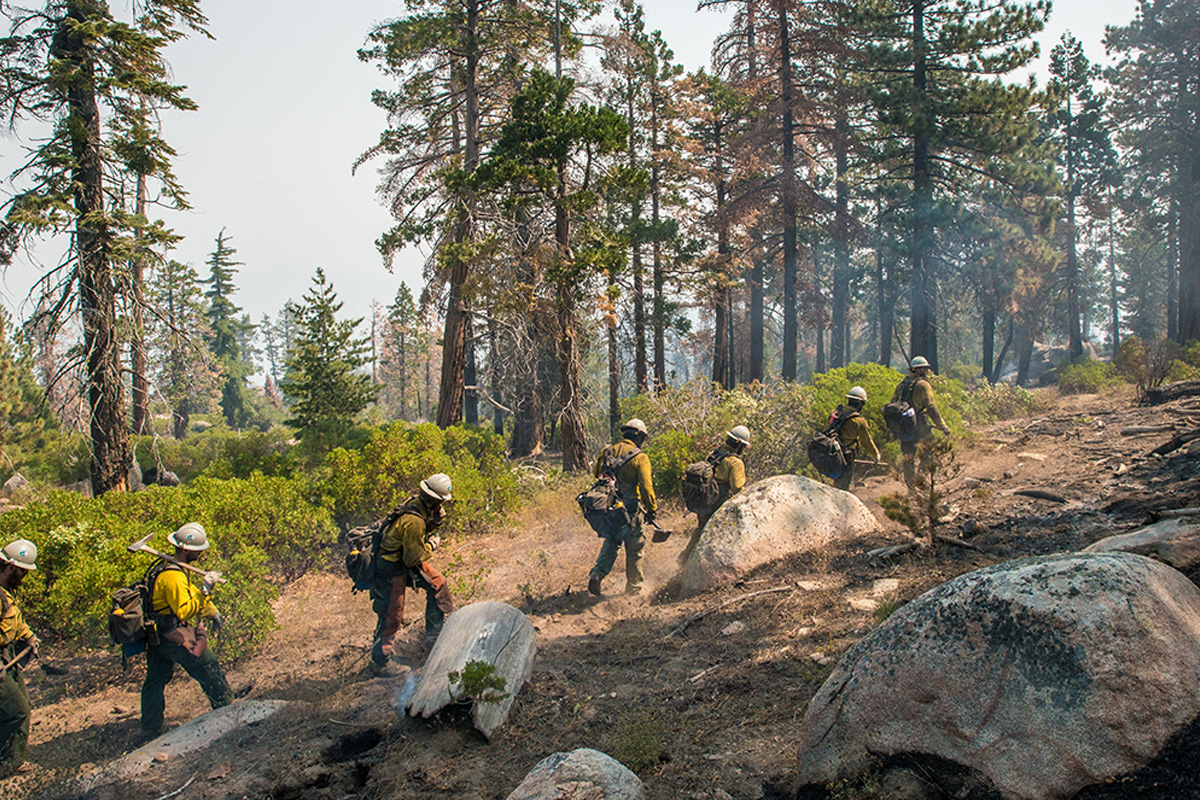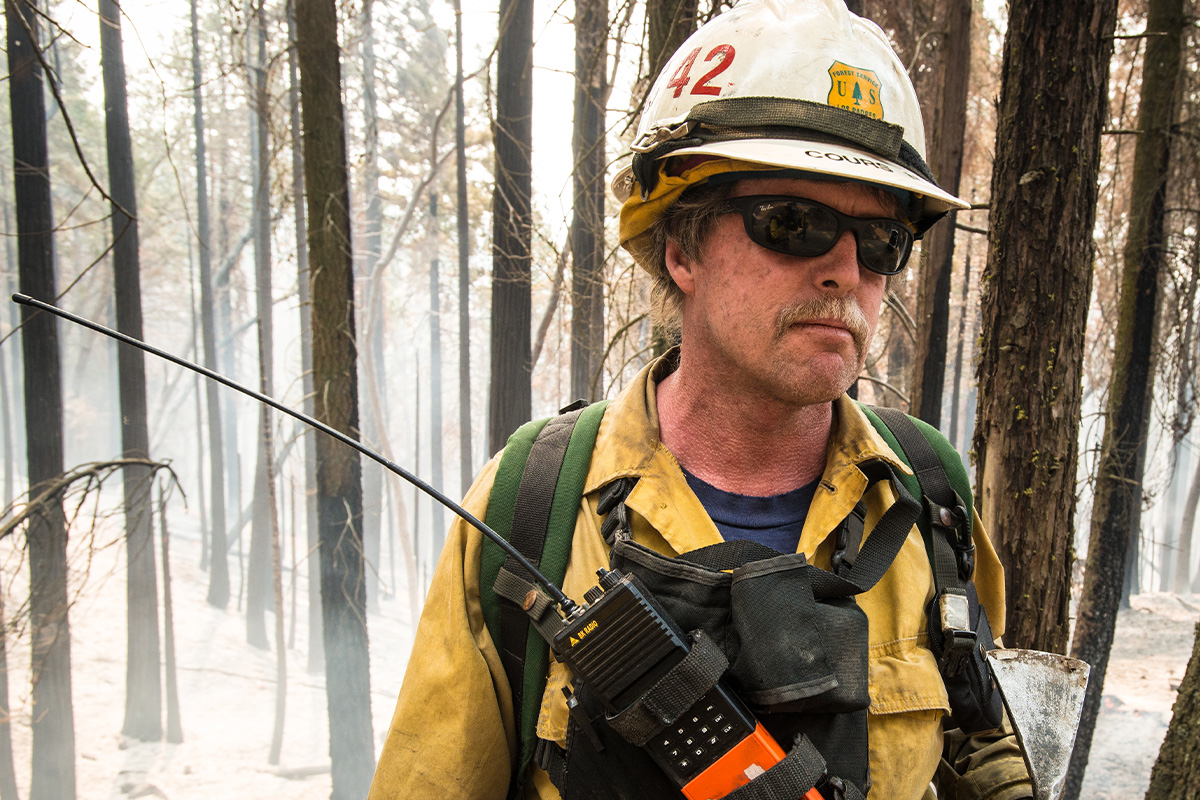Every day, and especially during wildfire season in Oregon, brave men and women wildland firefighters gear up and set out to preserve and protect our beautiful state, its communities, and its people. This sacrifice is no small feat – and requires thorough preparation, safety gear, stamina, reliable equipment, teamwork, and familial support.
Wildfires are both a phenomenon and a force of nature that are at times unpredictable and dangerous and can cause devastating damage to forests and properties alike. Wildland firefighters are often our best line of defense against forest fires, and these dedicated individuals play a critical role in protecting lives and property.
This challenging and demanding profession requires specialized skills, training, and equipment. According to the U.S. Department of Agriculture (USDA) Forest Service, wildland firefighting is a “career [that] can provide tremendous rewards to men and women of character, courage, and commitment, who readily accept managed risk to protect lives, communities, and natural resources.” Read on to learn how firefighters and their families can expect to prepare for fire season, plus the essential equipment they need and use to stay safe on the job.

What To Expect As A Wildland Firefighter
Not only will wildland firefighters be part of one of the most elite firefighting organizations in the world, but they will also establish tight bonds with fellow crewmembers and wildland personnel, depending on one another for peer support. The wildland firefighter is expected to be away from home for long periods, work erratic schedules outside of normal hours, be in top physical and mental condition, and risk their lives in hazardous environments. Forest firefighters, who work to control and extinguish forest fires, can also be expected to work in remote areas and face a variety of challenges including trekking in treacherous terrain, facing unpredictable fire behavior, and navigating changing weather conditions.
The USDA’s “Preparedness Guide for Wildland Firefighters and Their Families” gives us a look at a day in the life of a wildland firefighter. A wildland firefighter’s typical day can look like this:
- Waking up early (5:30 am) in their tent and pack and load their gear.
- Breakfast with their crew and camp.
- Starting their shift with an operational briefing, gathering up gear and supplies for the day.
- Driving with their crew to the firelines to start the day’s work.
Working on-site with the tasks assigned at the fire.
- Breaking for lunch typically with a fire-issued sack lunch or military-style Meal Ready to Eat (MRE).
- Hike in and drive back to camp after the shift.
- Dinner and preparing for the next day.
How Families Can Help Prepare
At any time, wildland firefighters may receive the call of duty and need to be prepared to gear up and head out often at a moment’s notice. This can sometimes be challenging with firefighters who have families, and confusing or concerning for family members. However, firefighters can prepare themselves and their families to be on the same page when the calls come in. Wildland firefighters can help prepare by:
- Talking with their families about special events (birthdays, vacations, reunions) that may be interrupted by their call of duty.
- Ensuring they always have their own mode of transportation, or the ability to get to their vehicle expeditiously.
- Communicating with one another about limited reception and cell service while out in the field.
- Early season expectations of limited availability during their service.

Gear For The Wildland Firefighter
Part of being prepared and knowing what to expect is having the right and reliable gear and equipment at the ready. This includes employer-provided Personal Protective Equipment (PPE) such as fire-resistant clothing, shelters, and other safety items, as well as a personal backpack or gear bag to be as comfortable as possible while out in the field. Additionally, wildland firefighters will work with a variety of tools and gear, including fire extinguishers, hot shields, fire axes, and firefighting tools. Here are some of the essentials every wildland firefighter needs to have in their firefighting arsenal:
- Personal gear for comfort while away from home including a backpack weighing up to 45 lbs with underwear, socks, sleeping bag, sleeping pads, batteries, snacks, heat and fire-resistant (Nomex) clothing, headlamps, hygiene products, and a tent.
- Wildland firefighters use Class A and Class B extinguishers, which are designed to put out fires caused by combustible materials such as wood, paper, and fuel.
- Hot shields are another crucial piece of firefighting gear used by wildland firefighters. These shields protect firefighters from heat and flames while they are working to extinguish a fire. Hot shields are made from high-temperature-resistant materials and are designed to be lightweight and easy to maneuver.
- Fire axes, halligan tools, and chainsaws are firefighting tools designed to help firefighters cut fire lines, clear debris, and create fire breaks.
- Specialized clothing and equipment designed to protect firefighters from heat, flames, and smoke are essential. Wildland firefighting gear includes fire helmets, fire-resistant clothing, and specialized boots.
The National Fire Fighter Corporation strives to provide customers with the products they need to protect themselves, their communities, and their property from the devastating effects of fire. NFFC is a trusted source for quality, reliable firefighting gear to help effectively extinguish fires, stay protected, and minimize injury. With innovative designs, and high-quality, durable materials, NFFC wildland fire equipment and products help keep the brave men and women fighting fires safe when things get hot.